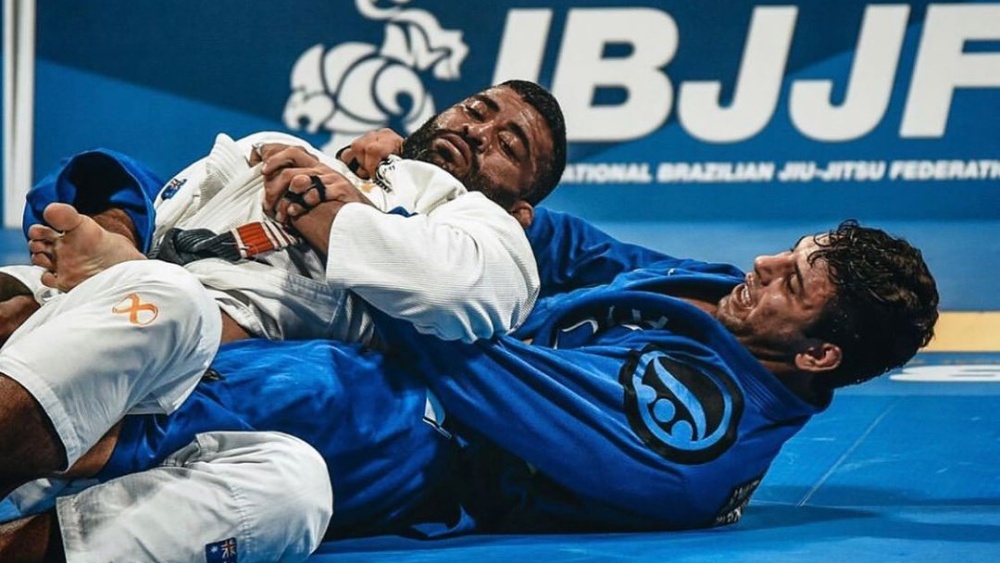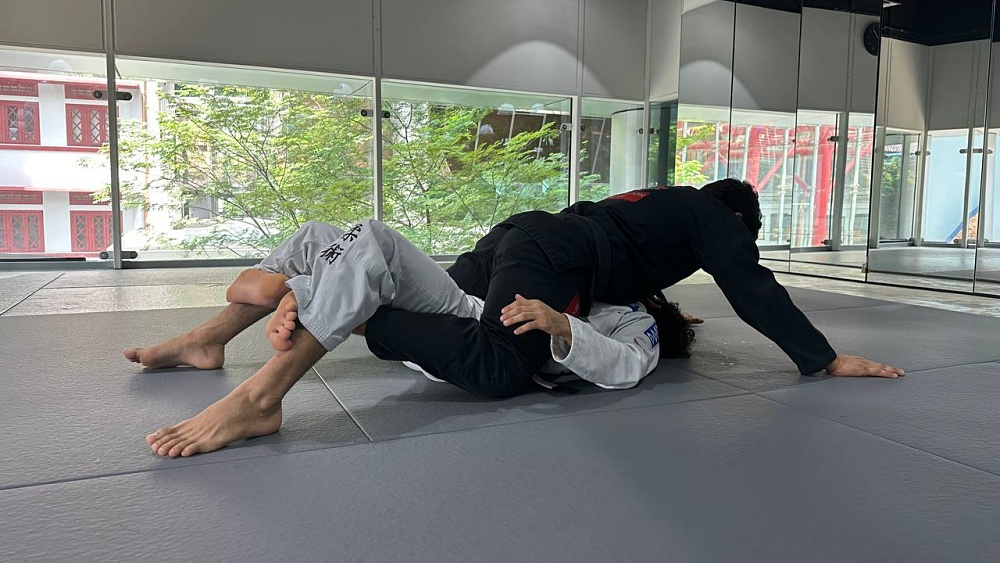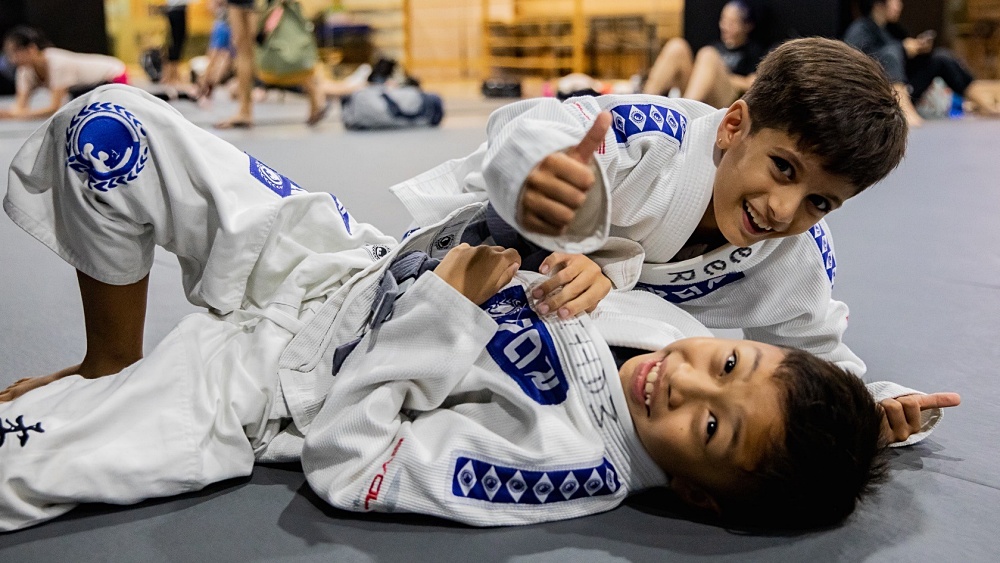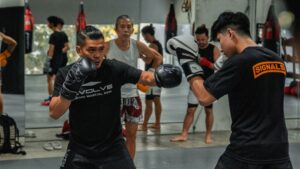Grappling is a critical element of mixed martial arts. Joe Rogan popularly said that grappling, specifically, wrestling, is the best base for MMA because it allows the fighter to dictate where the fight goes.
Today, Evolve Daily will discuss two of the most important techniques in grappling for MMA; underhooks & overhooks.
Underhook
An underhook is a clinching technique used in grappling to control an opponent. It is a controlling position where the hands are placed under the opponent’s arm to control his shoulder and upper body. This can be done by using both hands (double underhook), or only one hand (single underhook) with the other hand controlling the wrist of the opponent or with an overhook.
This is a strong position because it allows you to control your opponent to set up takedowns such as the single leg and the double leg, trips, and throws such as tai otoshi, osoto gari, and uki goshi to name a few.
Overhook
On the other hand, an overhook, the opposite of underhook, is also done in the clinching position where the hands are placed above the opponent’s shoulders and is usually performed as a defensive reaction from the underhooks.
Generally, overhooks are considered inferior to underhooks as it is normally done as a defense when an opponent initiates the underhook. Even though the overhook is less desired compared to the underhook, it can still be used to put an opponent off-balance, perform takedowns and throws such as the fireman’s carry, and uchi mata.
It can even be used to set up a whizzer which can transition to a front headlock leading to sumi gaeshi and tomoe nage as the famous John Danaher said, “control your opponents’ head and you control the body.”
Application Of Technique
Now, let’s talk about the application of the overhook and underhook in MMA. A lot of factors must come into consideration such as the ruleset and the environment of the sport.
In an MMA match, a fighter is allowed to throw punch, kicks, knees, elbows, and shoulder strikes against his opponent (as long as it does not land at the back of the head) which makes the application of the underhook and overhook a bit different compared to its application in a pure grappling match.
The second thing to consider is the environment of the sport. In a grappling situation, be it Wrestling, Jiu-Jitsu, or Judo, the matches are usually done on a mat. MMA matches are typically done in a cage with a fence, which gives the contrast application of the overhook and underhook.
Using The Underhook In MMA
Underhooks in the context of MMA is the optimal place you want to be in when you are grappling for control against the opponent. It gives the dominant advantage as it allows the setting up of takedowns with strikes easier as the element of the cage and the fence can come in handy.
Let us use UFC Welterweight Champion Kamaru Usman as an example: Usman utilizes the underhooks to control his opponent’s body to force them against the fence of the octagon. From there, he likes to set up his takedowns by utilizing punches, knees, elbows, shoulder strikes, and even foot stomps to distract his enemies or stall for the rest of the round to secure the advantage.
Although generally, the underhook is seen to be effective for control in a stand-up grappling fight in MMA, it is not less effective as applied on the ground.
Similar to its purpose on the stand-up grappling fight, an underhook that is applied on the ground will also give a better advantage against the opponent as it opens up the enemy for punches and elbows especially when a fighter is trying to pass the half-guard of his opponent or has found himself in a crucifix position.
Underhook as a defensive position on the ground is also very helpful, as it gives you the opportunity for a sweep, escaping bad positions, and to avoid getting punched while being on the ground.
Using The Overhook In MMA
https://www.youtube.com/watch?v=d9V2E7FbTUc
Contrary to the underhook, the overhook which is done as a defensive reaction is somehow shown as an inferior place to be in an MMA fight.
Considering that the overhook is not the position that you want to be in an MMA fight, it can still be used to stop the takedown attempts of your opponent and can be capitalized to apply throws.
Using former UFC Lightweight Champion Khabib Nurmagomedov as an example:
During his match against Rafael Dos Anjos, RDA attempted to put Khabib on the fence by getting a single underhook and pressuring Khabib against the fence. Khabib, in return, capitalized on the underhook by RDA and applied a whizzer on the same hand and a far side wrist control on the other hand to set up a soto gake (major outer hook), throwing RDA on the ground all while getting pushed on the fence of the octagon.
A Common Drill Exercise For Overhook And Underhook
Pummeling is a stand-up drill used by wrestlers to get familiar with the motion of continuously swimming inside for positional control in order to set up throws and takedowns. To practice pummeling, grab a partner and get the overhook and underhook on each hand. Each partner must swim inside their overhooking arm to get an underhook while bumping each other chest to chest. Pummeling can be done as a warmup or a cooldown exercise after every training session.
Final Thoughts
Overall, getting the double underhooks is the position you want to be in. This does not mean that the overhook is a negative or a bad position, in fact it is a defensive position. It is best to get familiarized with the overhook and underhook as it is a part of grappling that is essential for every fighter and mixed martial arts practitioner to understand.
You may also like:

















